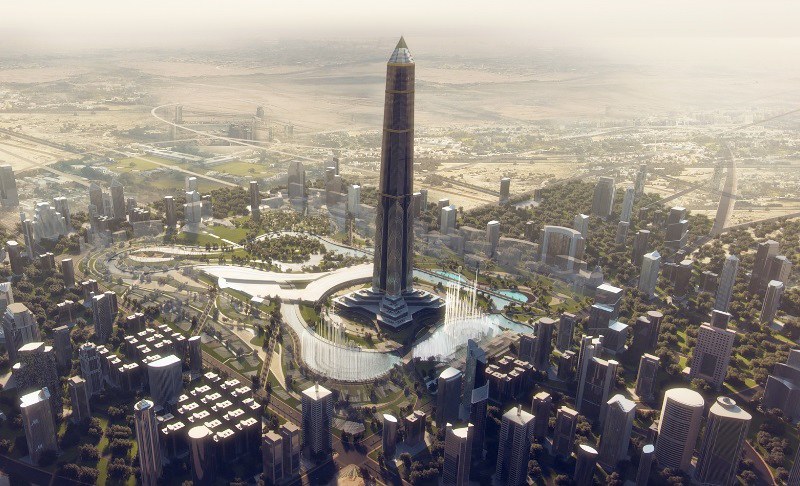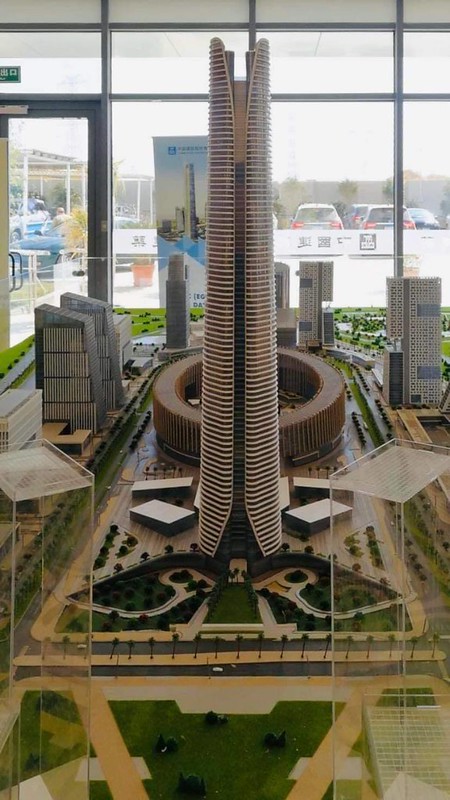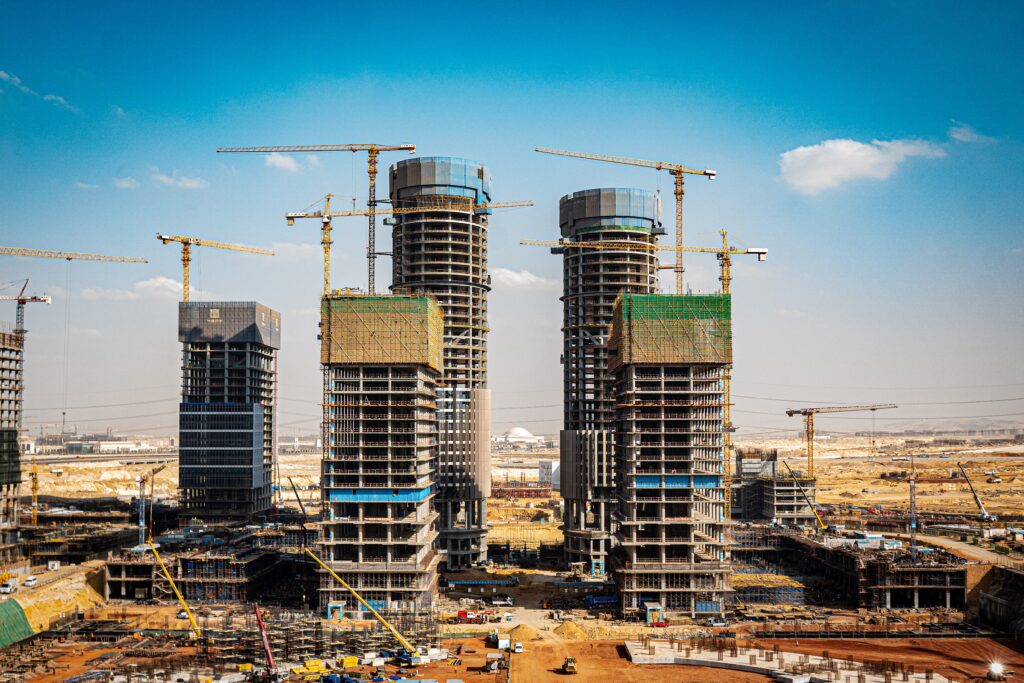A City for Egypt’s Future, or Al-Sisi’s?

Six years ago, the Egyptian government announced they would construct a New Administrative Capital (NAC) in the desert east of Cairo. This development would be a key part of President Abdel Fattah Al-Sisi’s “Egypt Vision 2030,” the country’s long-term national agenda aiming to “achieve sustainable development principles and objectives in all areas.” Allocating billions of dollars towards the construction of a new city (which remains nameless) in order to replace one that is already struggling is a risky move — one which does not bode well for the future that Al-Sisi wants to build.
The first listed goals of the Egypt Vision 2030 are social inclusion, social justice, and improving the living standards of Egyptian citizens. Not only does the new city fail to fix the real problems that exist in Cairo, but it also fails its citizens by neglecting the only development goals which directly pertain to them. Instead, the NAC channels monumental grandeur and smart technology to meet the state-oriented goals of the Egypt Vision 2030 plan: state governance, the rule of law, security, and global leadership.
For the last decade, an increase in vehicle ownership associated with rapid population growth in Cairo has resulted in persistent and chronic traffic congestion. A 2013 study estimated that Cairo’s congestion represented an estimated loss of £50 billion EGP due to delays, fuel consumption, air pollution, and accidents. This loss was equivalent to about four per cent of Egypt’s GDP at the time, a figure which must have struck a chord within the Egyptian government — a few years after that study, they decided to act on it.

Prime Minister and Housing Minister Mostafa Madbouly explained that the NAC aims to alleviate both the overpopulation and congestion problems in Cairo. Given the rapid growth of Egypt’s population (which passed 100 million in 2020), building more housing units is a good idea in theory. With Cairo’s metropolitan population of 21 million expected to keep increasing at a steady rate in the coming decades, something needs to be done to ease the pressure on the city. However, in the words of Cairene conservation architect May Al-Ibashy, “it is a challenge, but […] going out into the desert is the easy way out.” The 2013 study that examined the effects of congestion offered clear infrastructure solutions that could help alleviate those issues, such as improving public transit and creating park-and-ride systems that allow drivers to leave their vehicles in a parking lot and ride on a network of buses that covers Cairo’s main arteries at peak hours. These changes should not be out of reach for a government that plans to build “the smart city of tomorrow.” Al-Sisi’s decision to forgo these policies as primary goals and opt instead to relocate government ministries to a new capital is precisely political.
Political exclusion of Cairo’s masses
In 2011, mass protests in Cairo ended Hosni Mubarak’s 30-year long presidency and placed Mohammed Morsi as the head of the executive. Abdel Fattah Al-Sisi was the commander-in-chief of Egypt’s army when, just two years later, more violent protests — against Morsi this time — set the stage for his military coup. Al-Sisi understands the power of Cairo’s street protests, having been himself a beneficiary of their outcome. It comes as little surprise, then, that his government created new laws to heavily restrict political dissent in the first year of his presidency. It is even less surprising that, soon after, they decided to relocate the government administration outside of Cairo, placing a special emphasis on surveillance in the new city. When asked what the new capital entails, spokesman General Khaled Al-Husseini stated, “it means a modern city. It means cameras everywhere. It means sensors for pollution, sensors for speed.” Indeed, the official website for the project advertises six core pieces of smart infrastructure that will be implemented, one of which, titled “Safe City,” consists of “covering all parts of the city with CCTV cameras and control sensors integrated to the city control center.” This, combined with the city’s immense scale, would make organized protest much harder than it has been in Cairo in the last decade.
If securing the new capital with smart surveillance technologies does not entirely quell Al-Sisi’s fear of recurring unrest, then the entrance cost to live in the NAC will. The project website claims that the city could host 6.5 million inhabitants. But with some apartment units estimated at $60,000 USD, even Egyptians like Magdi Makramalla, an engineer overseeing the project on a government salary, would struggle to afford units there. Affordable housing is available in other neighbourhoods, according to a project spokesperson, but many of the units are being sold to foreign investors or private real estate companies in order to amass funds for the project’s enormous $50 billion USD development budget. In early March, the national government warmly welcomed Marriott International as they opened a luxury hotel in the NAC. This is another sign of the government’s inclination towards international capital accumulation, luxury tourism, and prestige, rather than any meaningful attempt to improve the lives of local Egyptians.
Pharaonic dreams of splendour
Al-Sisi’s ambitions for the administrative capital are monumental. Along with Egypt’s largest cathedral and mosque, both of which were completed in early 2019, plans also include a “Green River” park emulating the Nile in the desert, which would be one of the largest urban parks in the world. In a recent inspection of the project, a presidential report describes the dome of the Parliament building as “one of the largest domes that have been built in the world,” without failing to mention “the highest and largest flagpole in the world” erected in the People’s Square.
The NAC is a project of might and grandeur: the Iconic Tower, which will become the tallest tower in Africa, and The Octagon, which ‘three-ups’ The Pentagon as the world’s largest national defence headquarters. The vision for “Oblisco Capitale,” which would become the world’s tallest tower in the middle of an ultra-modern city in the desert, represents the duality of Al-Sisi’s regime: alienation from Egyptians and globally-targeted expressions of grandeur using Pharaonic iconography and motifs.

Al-Sisi’s insistence on the project’s timelines has meant recruiting the military to oversee construction. This guarantees, as long as financial backing from the UAE and Chinese contractors continues, that the project will be seen to completion. For the sake of the vision, the government will do whatever it takes to get this project done. The NAC means more than just relocating ministries away from Cairo’s congestion and crowds; it means consolidating power in a “world capital,” solidifying Egypt’s prestige throughout the region.

No amount of construction 45 kilometres east of Cairo will fix the crumbling infrastructure of the current capital city. The success of the NAC will depend on whether or not regular Egyptians will be able to live there. If the new administrative capital attracts foreign investment and business interests without providing homes and jobs for the overflowing crowds of Cairo, then conditions will stagnate. Egyptians will remain in a congested, polluted, jobless, deteriorated version of a once-great city, unable to peacefully protest against a government that has decisively turned its back on them.
Featured image: “Oblisco Capitale” by Ziad Rashad is licensed under CC0 1.0 – public domain.
Edited by Matthais Hoenisch
